Recently, we had the great pleasure of chatting with Tim Dressel, the founder of Kettleborough Cider House in New Paltz, New York. After considering a few different career options after college, Tim began producing and selling a unique dry hard apple cider using apples from his family’s farm, Dressel Farms.
Having grown up in the world of apple orchards and delving into the world of entrepreneurship, Tim is deeply knowledgeable about the history of apples, the science of cider production, and the ins and outs of starting ones’ own business.
Tim explains how he started Kettleborough Cider House, the challenges he has had to overcome, and what’s going on today in the cider industry. Keep an eye out for his thoughts on heirloom apples and what to consider when buying hard cider. Also check out his recipe for a hard cider cocktail further below!
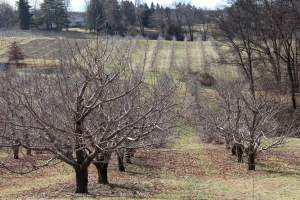
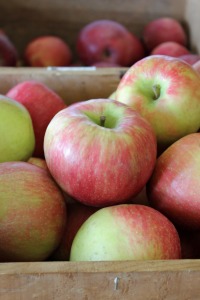
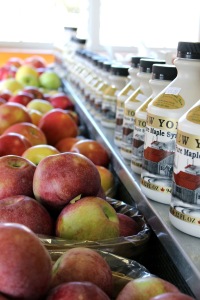
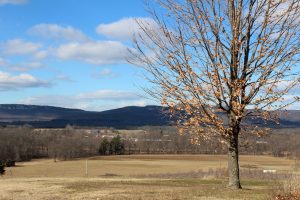
E&P: Tell us about Kettleborough Cider House, how did it all start?
Tim: Growing up on our apple farm I’ve been connected to agriculture my whole life. When I went to college I wasn’t sure what I wanted to do or if I even wanted to return to the farm at all. While at school I became very interested in wine, winemaking and viticulture. This, in part, convinced me to continue with the family business, but to do so in my own way by planting grapes with the intention of opening a winery. During the first few years of establishing my vineyard, the hard cider craze began to gain some traction. I saw an opportunity to combine my newfound love of fermentation with my apple-grower heritage.
I legally started Kettleborough Cider House in January of 2011 and spent the next year obtaining my required licenses. Production of the first batch of Kettleborough cider began in the spring of 2012.
E&P: How has your family’s farming business, Dressel Farms, impacted the development and day-to-day operations of Kettleborough Cider House?
When I was originally considering a winery, I knew virtually nothing about viticulture (grape growing) beyond my basic horticultural knowledge. I took a 3-credit introductory Viticulture and Enology course and then planted 3 acres of grapes and essentially forced myself to learn by doing. Admittedly, I probably bit off a little more than I should have and the first few years were somewhat bumpy. While I’ve come a long way since then, but I’d still consider apples to be my forte simply from living with them my whole life.
Having the farm as a support to my new business has made all the difference trying to start and run it by myself in my “spare” time. My family recognizes Kettleborough for the highly complementary business it is to the main farm and has been very supportive allowing me to evolve what started out as a side project into what will hopefully be my full-time job in the future.
E&P: What was your earliest role at Dressel Farms? Does that experience shape how you view or run your business today?
Well my REALLY earliest roll was learning to work the register and make change at our roadside stand selling strawberries with my Grandmother when I was four. I guess you could say that shaped my customer service skills from the beginning.
If we’re talking about legitimate, full-time employment, that began after college. With a family business, we like to joke that we make up imaginary job titles when a form asks for them since it’s really difficult to condense what we do into one or two words. Mine have ranged from the simple “Manager” to the completely bogus “Director of Viticultural Analytics.” I’d say my main jobs have had to do with post-harvest processing: treating, storing, packing and shipping apples after they’ve been picked. This has helped me understand how to handle fruit and learn the market. It has also introduced me to the endless paperwork that unfortunately comes with modern agriculture.

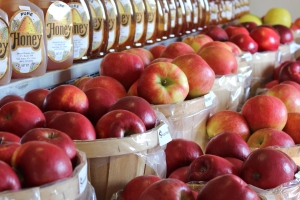
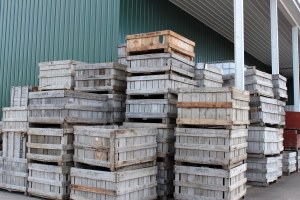
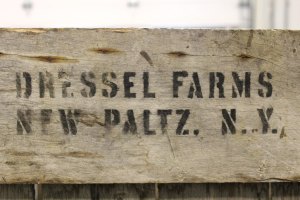
E&P: What do you enjoy most about working at Kettleborough Cider House and starting and growing your own business?
I think my favorite thing, beyond having an endless supply of hard cider, is the people I’ve met in the short time I’ve been doing this. Cider makers, for the most part, are some of the nicest, smartest, and most fun-loving people I’ve known. I got to know a lot of winemakers and, while they’ve also been very nice, a lot of them have a certain smugness that can come out occasionally. Cider makers are generally more humble. We’re all experiencing this Hard Cider Revolution together and trying to grow our infant businesses, trading secrets and experiences, and genuinely enjoying each others products and company. I encountered the same thing on a trip to French Cider Country. The hospitality shown to us by the French cider makers was amazing. I love the industry.
If we’re talking about an aspect of the job, it’s always been about the science for me. I love planting a tree and watching it grow, knowing what branches to cut to make it produce more fruit. I love that to make the product you have to literally rely on multiple other living organisms: from the apple tree to the yeast that actually make the alcohol, it’s a team effort and you’re the leader. It’s a fascinating process from dirt to glass and you can read every book in existence and talk to every experienced person you meet and you’ll still learn and tweak things when you actually do it yourself.
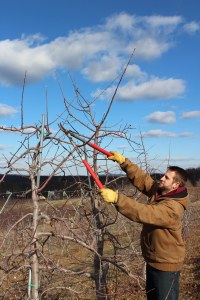
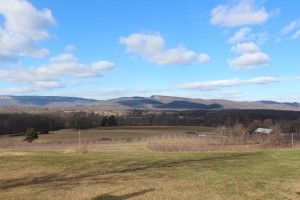
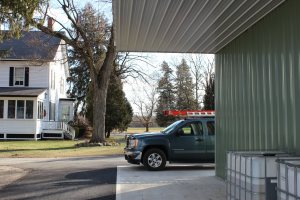
E&P: What is a challenge that you have already overcome in producing and selling your hard cider?
Navigating the legal jargon, licensing requirements, and general bureaucracy associated with operating an alcohol production facility was a full-on nightmare. I did my best to learn from colleagues and read as much as I could, but unfortunately our laws are very convoluted to the point that even the government employees that regulate them have a hard time remembering and interpreting them. When I began production I had some parts of the operation that needed serious tweaking to comply with the federal and state laws. It was a process that lasted a few months and caused me to lose quite a bit of sleep, but I got it squared away and learned a lot more from the process, so I guess it was a good thing, albeit completely infuriating.
E&P: What is the biggest challenge facing you this year?
I’ve been in the process of expanding production by moving into a new facility and purchasing larger tanks and equipment. The challenge this year will be overcoming the growing pains associated with this expansion and developing new products.
E&P: What advice would you give to your younger self just prior to starting your business?
I think I’d tell myself to be patient. I was really excited and anxious to do everything as quickly as I could to get up and running and be successful right away. It didn’t really occur to me that I knew practically nothing about what I was getting myself into and the process I was taking on. I could have saved myself a lot of headaches if I took the time to approach everything in a more organized way.
E&P: Hard ciders are becoming increasingly popular. Can you give us an overview of the market and how it has evolved?
Five years ago, hard cider was a VERY niche beverage. There were two or three corporate American brands and a handful more being imported from Europe and then the occasional craft producer selling a little bit here and there. That has changed entirely. Every big beer company now has their own cider brands that they are advertising and promoting heavily. In just the few years I’ve been in business I’ve seen close to a dozen new craft producers pop up in New York State alone.
The national market for hard cider has increased something like 600% since 2008 and it easily qualifies as the fastest-growing beverage in the country. While this means more competition, it also means a more aware consumer and an increasing standard of quality, which is very exciting. It’s also a great time for producers because the market isn’t saturated like the wine market is. There’s still enough scarcity that making unique ciders is not too difficult. Innovation is running high and it’s a really exciting time to be producing hard cider.
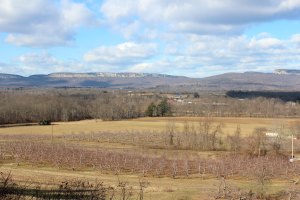
E&P: What types of hard ciders do you produce? How has the quantity of production changed over time?
At the moment I’m selling two varieties of hard cider. Our main-stay is called, simply “Dry Cider.” It’s a bone-dry, “champagne-style” cider made with Granny Smith and Northern Spy apples. We describe it to newcomers as “apple Prosecco” because of it’s light, effervescent nature. It’s one of the driest ciders I’ve ever drunk so it’s perfect to drink with a lot of foods and makes great cocktails.
Our other current cider is a strawberry-infused cider. The base to this cider is essentially our Dry Cider, but then I hand-pressed Dressel Farms strawberries and added their juice to the finished cider. The result is an off-dry cider that’s still remarkably crisp and finishes with a bright red strawberry flavor. It’s a really unique beverage.
I’ve dabbled with some other types of ciders, made from traditional European cider apples and some other test batches that haven’t been released to the public. I’m hoping this year to release at least one new year-round variety (probably a sweeter version) and one or two seasonals.
As far as quantity goes, I’m still in the “extremely small amount” category. Last year I produced about 1300 gallons of cider. I hope to at least double and preferably triple that amount this year
E&P: How does the production of hard cider and sweet cider differ or how is it the same?
Hard cider is really just fermented sweet cider. “Sweet Cider” is what Americans think of when you say “apple cider.” It’s simply unfiltered apple juice- no sweeteners, no colors, no nothing. To make hard cider, you crush and press apples to make sweet cider and then ferment that juice like you would a white wine. From beginning to end, the fermentation process can take anywhere from a couple weeks to months, depending on the style and flavor of cider the cider maker is looking for.
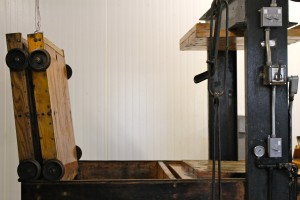
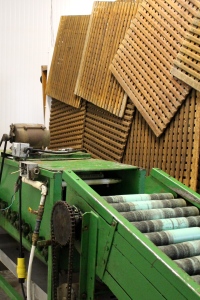
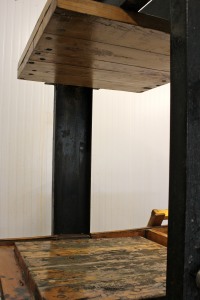
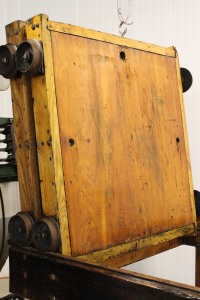
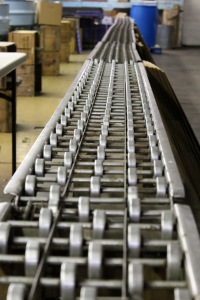
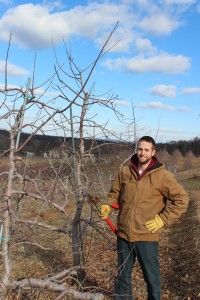
E&P: What makes your hard ciders unique?
I decided to make “Dry Cider” because as a consumer I was disappointed with the selection of ciders on the market. All of the corporate ciders were especially sweet to the point of them being sickening. Even most craft ciders were being made to appeal to an only slightly more sophisticated cider palate. I wanted to drink something crisp and refreshing, so that’s what I produced. With the growth of the market, there are certainly some producers making drier ciders, but I still think mine stands alone in its category.
The same goes for the Strawberry Cider. If another strawberry-flavored cider exists I haven’t heard of it and I’d wager if there is one they didn’t use their own, hand-pressed strawberries to make it. And I’d DOUBLY bet their Strawberry Cider isn’t bottle-conditioned, unfiltered and off-dry.
E&P: Can you explain a bit about some of the different apple varieties and hybrids that are used for apple picking, regular cider, and hard cider? What’s the story behind the new trend in heirloom apples?
Since the end of prohibition, hard cider in America has been made using typical eating or “dessert” apples. These are your usual McIntosh, Red Delicious, etc apples that everyone is used to seeing on the grocery store shelves. Apple breeding programs have developed new strains of popular apples and even created entirely new varieties, all with the aim of making crisper, sweeter, more visually attractive fruit.
While you can make good cider from these varieties, they lack the complex flavors that traditional cider apples. European ciders are produced using apple varieties that would make terrible eating apples. They tend to be bitter and astringent which isn’t appealing to eat, but they give hard cider depth and body. Modern apples have had these flavors intentionally bred out of them.
These heirloom apples are very rare in the US since they became virtually useless during prohibition and the orchards were replaced with dessert apples. With the recent surge of hard cider popularity, the demand for these apples has skyrocketed. Growers aren’t selling many of them because they’re keeping them for their own production. I’ve been lucky enough to acquire approximately 400 trees and planted about 2 acres of these antique apples that I plan to use in the coming years for a line of more authentic ciders.
E&P: We loved learning about the facilities used for storing apples. Can you tell us a little about the storage process?
Our farms’ main business is wholesale apple sales to grocery stores. We grow, on average, about 130,000 bushels of apples every year. That’s just over 5 million pounds. Our capacity to sort, package and sell apples doesn’t come close to 5 million in the time around harvest, so we utilize state-of-the-art storage facilities we’ve build on-site. Long-term apple storage relies on what is called “Controlled Atmosphere” or “CA” storage. This entails sealing the apples in large, refrigerated, air-tight rooms and lowering the oxygen levels, effectively slowing the natural respiration of the picked fruit and thereby slowing the ripening process to a virtual stand-still.
We have the capability of storing close to 100,000 bushels in our designated CA rooms at any one time. In the fall we fill the rooms and seal them ASAP to preserve the fruit. Over time, we open these rooms one-by-one when we need more apples to pack and sell. Depending on the variety and method of storing, we can effectively keep apples crisp for a year or more in the CA rooms, although we usually exhaust our stock by the following June. After we run out of apples, our packing facility shuts down for the summer months until harvest rolls around again in September and we start all over again.
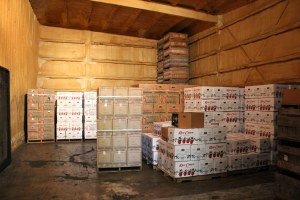
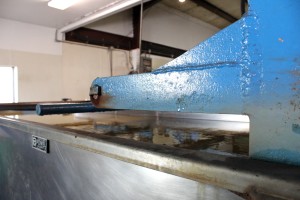
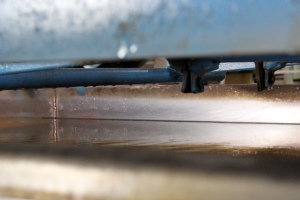
E&P: How will things change with your new production facilities and what can customers look forward to seeing in the next few years?
The biggest change the new facility will make will be a newfound ability to make a much larger volume of hard cider. Until now I’ve been relying on very small tanks and any tank space I can beg, borrow or steal (well, not steal). With my own large(er) capacity tanks I’ll be able to provide retailers with a much more consistent supply of my cider. Additionally, I’ll be able to make more types of ciders much more readily.
I’ve got LOTS of ideas for future varieties, of which I’m sure many won’t see the light of day. One of my earlier ideas was to have a cider flavored with each type of fruit we grow: apple, strawberry, cherry, peach, pear, raspberry and blueberry. I’d also like to make a hopped cider and explore single-variety ciders as well. For now this is mostly speculation.
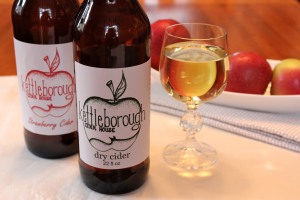
E&P: Lastly, what advice would you give to someone who’s looking to buy a hard cider? What should they be looking out for?
The biggest thing when looking for a hard cider is to not be afraid to branch out (no pun intended). The craft cider industry is so dynamic right now that there are a LOT of new types of cider hitting the market on a regular basis. I’ve converted customers who are convinced they don’t like hard cider because they tried Angry Orchard and didn’t like what they had and assume ALL hard cider is like that. To compare that to something more familiar, that’s like trying Bud Light and deciding you hate all beer. Ciders run the gauntlet from dessert-wine sweet to bone dry and everywhere in between. There’s barrel-aged cider and dry-hopped cider and I’ve even had a “hibiscus ginger” flavored cider. If you can’t find a cider you like it’s because you haven’t looked far enough.




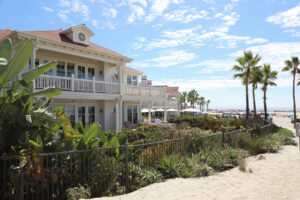
Leave a Reply
You must be logged in to post a comment.